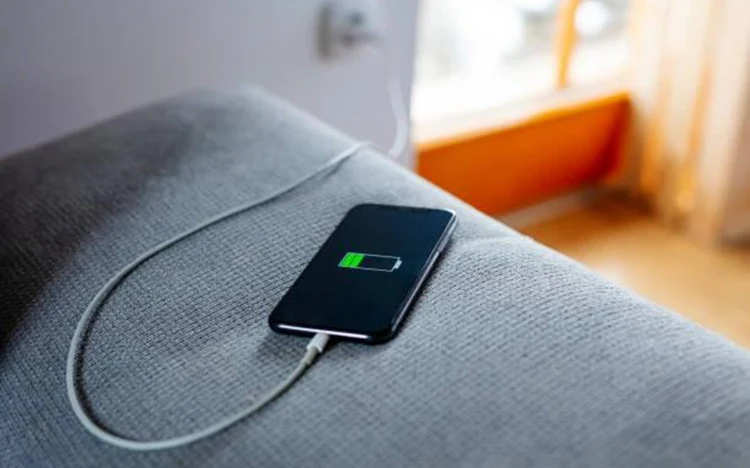
The Complete Guide to Chargers: From Core Principles to Smart Shopping—Become a Charging Expert with One Article
Updated on September 9, 2025
In this era where everyone owns multiple electronic devices, chargers have evolved from accessory to absolute necessity. But do you truly understand the little box that "replenishes life" for your devices daily? It's far more than just plugging a cord into an outlet; the technology and wisdom embedded within it far exceed our imagination.
Table of contents
- 1. How Does a Charger Work? The Mystery of Energy Conversion
- 2. What Types of Chargers Exist? Find Your Perfect Match
- 3. Practical Tips to Improve Charging Efficiency
- 4. Safety Features: The Essential Protections
- 5. Future Directions: Innovation Trends in Charging Technology
- 6. Shopping Guide: How to Choose the Best Charger for You
- Conclusion

The quality of a charger directly impacts the charging efficiency, usage safety, and battery lifespan of electronic devices. With the rapid development of fast-charging technology and the coexistence of multiple charging protocols, selecting the most suitable charger from countless products has become a specialized knowledge. This guide will systematically explain how chargers work, their different types, usage tips, and future directions to help you make informed choices.
1. How Does a Charger Work? The Mystery of Energy Conversion
The core mission of a charger is to convert alternating current (AC) or direct current (DC) from the power grid into voltage and current specifications suitable for the battery to receive. This process is far more complex than it appears.Traditional chargers are typically simple +5V regulated or switching power supplies with a basically fixed charging voltage, following a three-stage charging model: constant current, constant voltage, and float charging stages. Modern fast chargers, however, can support multiple output voltages (e.g., 9V, 12V, 15V, or even 20V), utilize advanced synchronous rectification technology, and feature built-in smart communication chips compatible with various fast-charging protocols (such as QC, PD, etc.).
When charging begins, a "negotiation dialogue" occurs between the charger and the device via the data cable. Based on the current status of the device's battery (charge level, temperature, etc.), charging parameters are dynamically adjusted, the appropriate power level for fast charging is determined, and the mode automatically switches to trickle charging when the battery is nearly full.
2. What Types of Chargers Exist? Find Your Perfect Match
Chargers can be categorized in various ways:By Battery Type: Common types include dedicated chargers for lead-acid, nickel-cadmium/nickel-metal hydride (NiCd/NiMH), and lithium-ion (Li-ion) batteries. Different battery types require matching chargers to ensure safe and efficient charging.
By Function: Divided into standard chargers and smart chargers. Smart chargers have built-in microprocessing chips that can automatically identify battery type and adjust charging strategy, while also providing multiple safety protections like overcharge and short-circuit prevention.
By Structure: There are two designs: integrated (charging circuit and battery encapsulated together) and split-type (charging circuit and battery are separate).
By Technology: Encompasses different technological approaches like linear chargers, switching power supply chargers, fast chargers, and wireless chargers.
3. Practical Tips to Improve Charging Efficiency
Want your devices to charge faster? Try these methods:Choose the Right Combo: Select a high-power charger supporting fast-charging technology (recommended 20W or above) and a high-quality charging cable (low-resistance design) to significantly boost charging speed.
Keep Ports Clean: Regularly clean dust and debris from your device's charging port to ensure a good connection between the plug and the port.
Control Ambient Temperature: Charging efficiency is highest at ambient temperatures between 20°C - 30°C; avoid excessively high or low temperatures.
Avoid Using While Charging: Using the device while charging increases the burden on the battery and reduces charging efficiency.
Protocol Matching Matters: Choose a charger that supports the fast-charging protocols your device uses (e.g., PD3.0, QC4+, etc.) and look for official certification marks.
Performance Comparison Table for Different Charger Types:
Feature Traditional Charger Fast Charger Wireless Charger
Charging Speed Slower Fast Slower
Convenience Average Average Very High
Device Compatibility Limited Wide (requires protocol match) Limited (requires device support)
Typical Power 5W-10W 18W-100W+ 5W-15W
Energy Efficiency Relatively High Relatively High Lower (losses during transmission)
Best Use Case Overnight Charging Quick Top-Ups Desktop/Car Convenience
4. Safety Features: The Essential Protections
A high-quality charger should have multiple safety protections:Overcharge Protection: Prevents excessive battery charging, avoiding battery damage or safety risks.
Short-Circuit Protection: Automatically cuts power in case of a short circuit to prevent accidents.
Temperature Monitoring: Monitors temperature in real-time to prevent performance degradation or safety issues due to overheating.
Overcurrent Protection: Avoids damage to the battery caused by excessive current.
These protective functions safeguard not only your device but also ensure the safety and reliability of the usage process.
5. Future Directions: Innovation Trends in Charging Technology
Charging technology continues to evolve. The following directions are worth noting:Wireless Charging Optimization: Improving wireless charging efficiency and convenience through enhanced electromagnetic induction and magnetic resonance technologies.
Smart Multi-Function Chargers: Emergence of smart chargers supporting dual-mode input (e.g., solar and mains power) with customizable output parameters.
Fast-Charging Upgrades: Continuous updates to charging protocols and increasing power levels promise faster and safer charging in the future.
Eco-Design: Use of recyclable materials and improved energy conversion efficiency to reduce energy waste.
6. Shopping Guide: How to Choose the Best Charger for You
Faced with a dazzling array of products on the market, the following suggestions can help you make a wise choice:✅ Identify Device Requirements: Understand the charging protocols and power requirements supported by your device.
✅ Choose a Reliable Brand: Prioritize well-known brands and certified products.
✅ Check Output Parameters: Confirm the charger's output power, voltage, and current meet your device's needs.
✅ Consider Usage Scenarios: Choose a suitable style based on different scenarios like home, office, or travel.
✅ Prioritize Cable Quality: Select high-quality charging cables, especially compliant ones are crucial for fast charging.
✅ Check Safety Certifications: Ensure the product has passed relevant safety certifications and quality tests.
Conclusion
As an essential companion to electronic devices, the importance of chargers cannot be underestimated. Understanding how chargers work, their different types, and usage技巧 (tips - Jīqiǎo) helps us better select and use charging products, enhance the charging experience, extend device lifespan, and ensure usage safety.As technology continues to advance, future chargers will become more efficient, convenient, and safe, better meeting our growing mobile lifestyle needs. Choose the right charger to keep your devices in optimal condition at all times, accompanying you every moment of your life.

